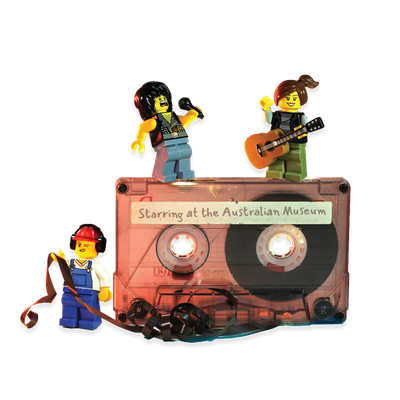Your search returned 20 results
By Page Type
By Tag
- All
- fish (966)
- blog (698)
- fishes of sydney harbour (400)
- First Nations (293)
- Blog (236)
- AMRI (169)
- archives (165)
- Aboriginal and Torres Strait Islander (135)
- Eureka Prizes (131)
- insect (126)
- Ichthyology (125)
- geoscience (109)
- minerals (102)
- climate change (98)
- podcast (94)
- Fish (91)
- Anthropology (89)
- International collections (80)
- Minerals Gallery (78)
- wildlife of sydney (78)
- Labridae (77)
- frog (73)
- gemstone (70)
- history (63)
- photography (63)
- staff (61)
- Mollusca (60)
- gem (59)
- Birds (58)
- education (57)
- Gems (56)
- Indonesia (56)
- AMplify (54)
- shark (54)
- people (53)
- exhibition (51)
- earth sciences (50)
- past exhibitions (50)
- Gobiidae (48)
- Pomacentridae (45)
- sustainability (45)
- Serranidae (44)
- science (43)
- lifelong learning (42)
- Earth and Environmental Science (41)
- Syngnathidae (41)
- Ancient Egypt (40)
- Bali (40)
- bird (40)
- dangerous australians (40)
-
Dingo
https://australian.museum/learn/animals/mammals/dingo/The Dingo is Australia's wild dog. It is an ancient breed of domestic dog that was introduced to Australia, probably by Asian seafarers, about 4,000 years ago. Its origins have been traced back to early breeds of domestic dogs in south east Asia.
-
Mammals
https://australian.museum/learn/animals/mammals/Discover Australia's mammals - all of which have hair or fur, produce milk and are warm-blooded.
-
Little Forest Bat
https://australian.museum/learn/animals/bats/little-forest-bat/Little Forest Bats breed once a year and produce only one baby in the summer.
-
Eastern Falsistrelle
https://australian.museum/learn/animals/bats/eastern-falsistrelle/Eastern Falsistrelle roost in hollows in old trees in higher rainfall forests, and are under threat from intensive forestry in their habitat.
-
Little Bent-wing Bat
https://australian.museum/learn/animals/bats/little-bent-wing-bat/Many hundreds of Little Bent-wing Bats roost together in a colony, often sharing their roosts with Common Bent-wing Bats.
-
Large Bent-wing Bat
https://australian.museum/learn/animals/bats/large-bent-wing-bat/In the nursery caves of the Large Bent-wing Bat there may be up to 3000 babies in a square metre of ceiling.
-
Northern Long-eared Bat
https://australian.museum/learn/animals/bats/northern-long-eared-bat/Northern Long-eared Bats also known as Eastern Long-eared Bat roost in tree hollows and occasionally in roofs.
-
Fawn Leaf-nosed Bat
https://australian.museum/learn/animals/bats/fawn-leaf-nosed-bat/Fawn Leaf-nosed Bats roost together in colonies but hang from the ceiling apart from each other.
-
Digging for whale bones
https://australian.museum/learn/news/blog/digging-for-whale-bones/Australian Museum scientists are in the process of excavating three complete whale skeletons from Lord Howe Island.
-
Sydney’s wild mammals
https://australian.museum/learn/news/blog/sydneys-wild-mammals/Many of Sydney's native mammals can still be found - if you know where to look.
-
Find out more
Tails from the Coasts
Special exhibition
On now![]()
-
Find out more
Burra
Permanent kids learning space
10am - 4.30pm![]()
-
Discover more
RELICS
Special Exhibition
Opens 16 August 2025![]()
-
Discover more
Minerals
Permanent exhibition
Open daily![]()





